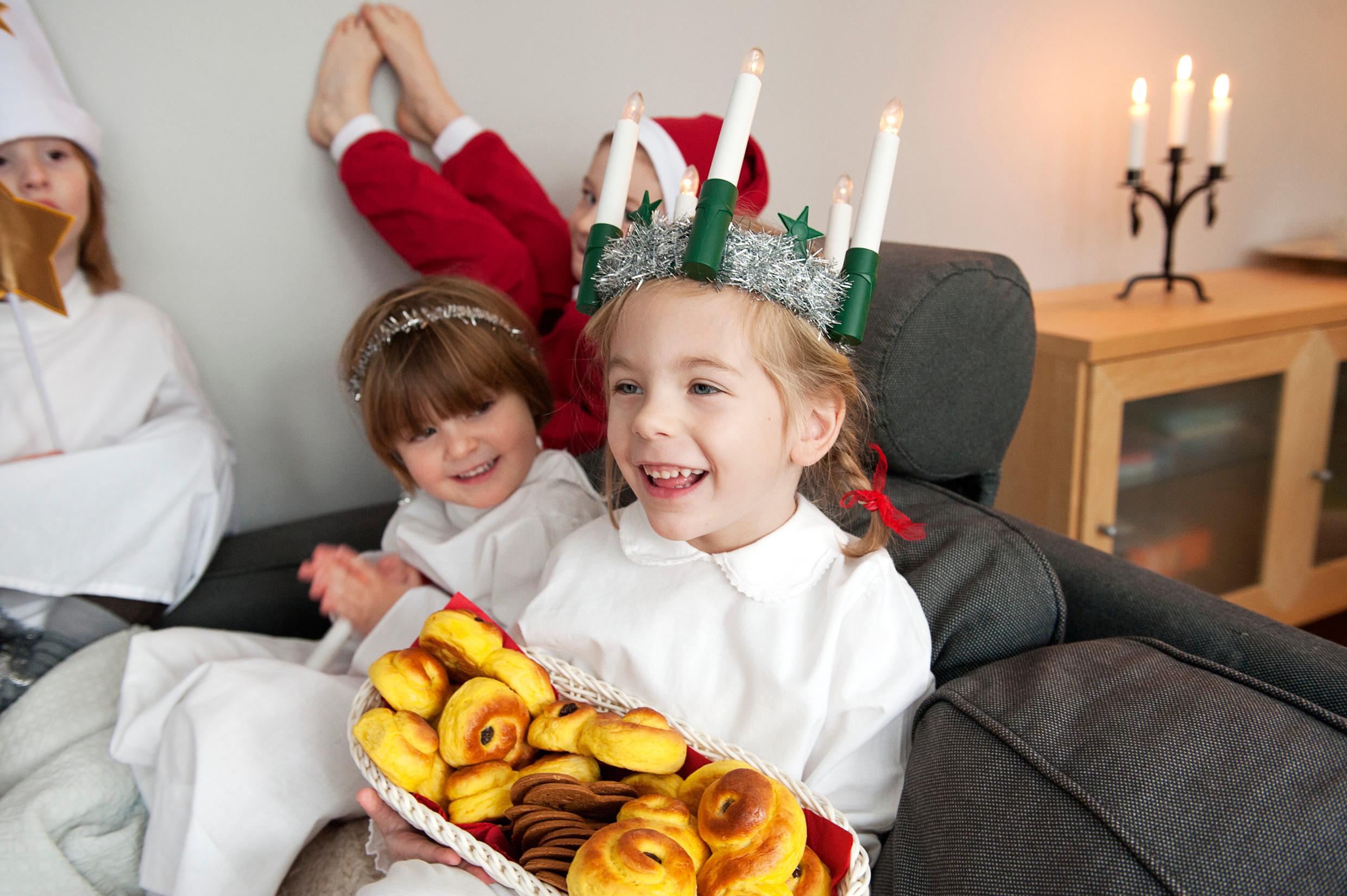A traditional Lucia procession. Photo: Cecilia Larsson Lantz/imagebank.sweden.se
The annual candlelit Lucia procession on 13 December is perhaps one of the more exotic-looking Swedish customs, with girls and boys clad in white full-length gowns singing songs together.
The real candles are now sometimes replaced with battery-powered ones, but there is still a special atmosphere when the lights are dimmed and the sound of the children singing grows as they enter from an adjacent room.
From our partners:
Tradition has it that Lucia is to wear ‘light in her hair’, which in practice means a crown of electric candles in a wreath on her head. Each of her handmaidens carries a candle, too. Parents gather in the dark with their mobile cameras at the ready.
The star boys, who like the handmaidens are dressed in white gowns, carry stars on sticks and have tall paper cones on their heads. The Christmas elves bring up the rear, carrying small lanterns.
Who gets to be Lucia?
There used to be a competition for the role of Lucia – on national TV as well as on a local level in towns and schools all over the country. Local newspapers invited subscribers to vote for one or other of the candidates. Today, no national ‘Lucia of Sweden’ is elected and schools often let chance decide who’s to be Lucia, for example by organising a draw.

Lucia − the bearer of light
Alongside Midsummer, the Lucia celebrations represent one of the foremost cultural traditions in Sweden, with their clear reference to life in the peasant communities of old: darkness and light, cold and warmth.
Lucia is an ancient mythical figure with an abiding role as a bearer of light in the dark Swedish winters.
The many Lucia songs all have the same theme:
The night treads heavily
around yards and dwellings
In places unreached by sun,
the shadows brood
Into our dark house she comes,
bearing lighted candles,
Saint Lucia, Saint Lucia.
Most Swedes know the standard Lucia song by heart and can sing it, in or out of tune. On the morning of Lucia Day, the radio plays some rather more expert renderings, by school choirs or the like.
The Lucia celebrations also include ginger snaps and sweet, saffron-flavoured buns (lussekatter) shaped like curled-up cats and with raisin eyes. You eat them with Swedish mulled wine (glögg) or coffee.
Swedish Lucia – the origins
The Lucia tradition can be traced back both to the martyr St Lucia of Syracuse (died in 304) and to the Swedish legend of Lucia as Adam’s first wife. It is said that she consorted with the Devil and that her children were invisible infernals. The name may be associated with both lux (light) and Lucifer (Satan), and its origins are difficult to determine.More about the origins of Lucia
For enquiries, product placements, sponsorships, and collaborations, connect with us at [email protected]. We'd love to hear from you!
Our humans need coffee too! Your support is highly appreciated, thank you!

